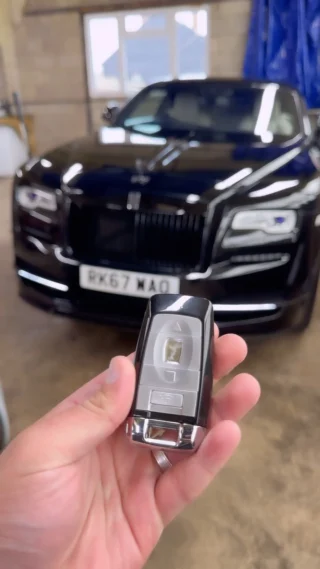KernsMaria
KernsMaria发表的博客
Comprehensive Guide to Car Door Lock Repair: Troubleshooting and Solutions
The stability and performance of a vehicle's door locks are important for both the security of the car and the safety of its occupants. Car door locks can experience a range of concerns, varying from minor mechanical problems to finish failures. This post looks for to supply a useful summary of car door lock repair, outlining typical issues, diagnostic procedures, and solutions.
Comprehending Car Door Locks
Before delving into repair treatments, it is vital to comprehend the parts of a typical car door lock. There are two main types of locks: mechanical and electronic.

Components of a Car Door Lock System
- Lock Cylinder: The part where the key is inserted.
- Latches: Mechanisms that hold the door shut.
- Actuator: Electric motor in electronic locks that helps in locking and opening.
- Linkage: Connects the lock cylinder to the lock.
- Remote Key Fob: In electronic systems, this is utilized to lock and unlock the doors from a range.
Typical Issues with Car Door Locks
Car door locks can stop working for a plethora of factors. Here are some common issues experienced by vehicle owners:
- Sticking or Frozen Locks: Especially in winter, locks can become tough to operate.
- Lock Not Engaging or Disengaging: Both mechanical and electronic locks can deal with problems where they do not react to the key or remote.
- Key Jams: The key might get stuck in the lock, making it difficult to lock or unlock the door.
- Remote Malfunction: In electronic systems, the key fob may not work due to battery problems or programming issues.
- Physical Damage: Vandalism or accidents can damage the lock mechanism.
Repairing Car Door Lock Issues
When a car door lock is not working correctly, it is very important to detect the problem accurately before continuing with a repair. Below are actions that can help repair the problem:
Step-by-Step Troubleshooting
Visual Inspection:
- Check the door lock and surrounding elements for noticeable damage.
- Examine the key for wear and tear.
Evaluate the Key:
- If the lock is sticking or not engaging, attempt using a spare key if readily available.
- Make sure the key is clean from dirt and particles.
Inspect the Actuator:
- Listen for any noises when pushing the key fob. A clicking sound might indicate a malfunctioning actuator.
Examine Door Wiring:
- Check the circuitry that links the door lock to the vehicle's electrical system.
- Look for disconnected or frayed wires.
Temperature level Influence:
- If the lock is sticking in cold weather condition, apply lithium grease to assist lube the system.
Repairing Common Door Lock Issues
As soon as the issue has actually been detected, the repair can begin. Here are some typical repair methods for numerous issues:
Fixing a Sticking or Frozen Lock
- Cleaning up: Use a graphite lubricant or silicone spray to tidy and oil the system.
- Heating: If frozen, use a hairdryer to warm the location around the locking mechanism carefully, preventing overheating.
Repairing a Lock Not Engaging/Disengaging
Lock Cylinder Replacement:

- If the lock cylinder is worn, consider replacing it. This frequently includes prying off the door panel to access the lock mechanism.
Actuator Replacement:
- For electronic locks, if the actuator is malfunctioning, it will need replacement. Ensure to detach the battery before trying this repair.
Fixing a Jammed Key
- Extraction Tool: If a key is stuck, use a set of needle-nose pliers to carefully pull it out, or a key extractor.
- Lock Lubrication: Apply a little quantity of lubricant to alleviate the procedure.
Remote Key Fob Malfunction
- Battery Replacement: Most remotes have exchangeable batteries. Follow the producer's directions to change the battery.
- Reprogramming: Sometimes, the remote needs to be reprogrammed. Refer to the vehicle's manual for steps to reprogram the key fob.
Physical Damage Repairs
- Door Lock Assembly Replacement: If the lock is physically damaged, complete replacement of the lock assembly might be required.
- Professional Help: If unsure about DIY repairs, look for assistance from a licensed mechanic.
Upkeep Tips for Car Door Locks
To extend the life of car door locks, regular upkeep is important. The following practices can assist keep optimum efficiency:
- Regular Lubrication: Apply proper lube to the locks every few months.
- Keep Keys Clean: Regularly tidy the car keys to prevent dirt buildup.
- Avoid Excessive Force: Do not utilize extreme force when locking or unlocking; this can cause damage gradually.
- Look for Signs of Wear: Be mindful to any modifications in the lock's performance and address issues immediately.
Frequently Asked Questions about Car Door Lock Repair
Q: How can I tell if my door lock is broken?A: Common
indications include the lock not engaging or disengaging, a jammed key, sounds from the door when utilizing the key fob, or noticeable damage to the lock assembly.
Q: Can I repair a car door lock myself?A: Yes, numerous easy concerns can be attended to by following the fixing actions in this short article, but complex concerns might need professional aid. Q: What type of lubricant need to I utilize
for my locks?A: It is best to use graphite powder or silicone-based lubes because oil can draw in dirt and grime. Q: How much does it typically cost to change a car door lock?A: The cost can vary widely
based on the vehicle's make and design, but typical replacement costs
can vary from ₤ 100 to ₤ 300, consisting of labor. Car door lock repair can seem overwhelming, but comprehending the elements and common issues can make the process a lot more manageable. Whether taking on little repairs yourself or seeking professional help for more substantial issues, keeping the door locks operating properly is vital for vehicle security and safety. Regular maintenance and timely attention to problems can considerably extend the life of your car's locking system.
